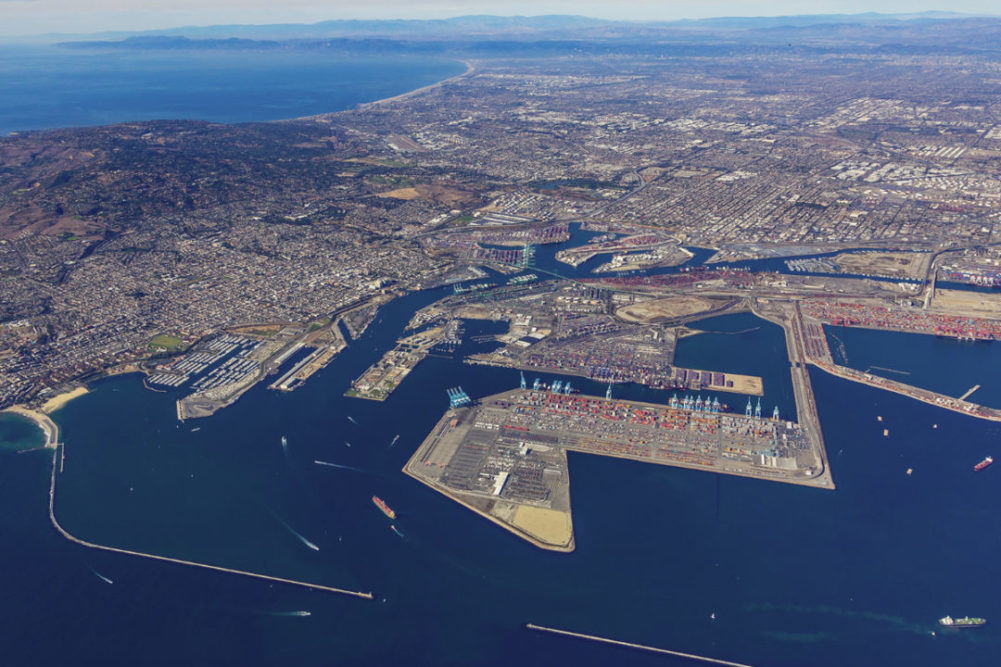WASHINGTON, — The Port of Los Angeles in California will operate around the clock in a bid to regain terminal space by clearing import containers for more fluid operations and to relieve the growing backlogs in the busiest US container port complex, the White House said Oct. 13.
With an eye to ensuring the expanded hours of port operation are fruitful in addressing a backlog that had cargo carriers and container ships in long wait times offshore, the White House brought together leaders of business, unions, and ports, the US Department of Agriculture’s Agricultural Marketing Service said in its weekly Grain Transportation report.
The AMS said those negotiation efforts have so far secured commitments from Walmart to increase its container turnover 50% over several weeks by increasing its nighttime operations and from United Parcel Service, which plans to increase its 24/7 operations, which will allow it to move 20% more containers off the ports. FedEx, in collaboration with its trucking and rail providers, plans to double nighttime container movement and Samsung said its warehousing operations will be open 24/7 for the next 90 days as the electronics and appliance giant looks to move 60% more containers out of the ports.
Containerized agricultural exporters rely heavily on the Los Angeles and Long Beach port complex to move products overseas. The port at Long Beach, California, US, already operates around the clock, seven days a week.
Trucking activity
A 30-day executive order signed Oct. 4 by the Minnesota Governor Tim Walz declared an emergency in that state and waived hours-of-service trucking regulations to support Minnesota livestock producers in the safe, efficient transport of livestock, water supplies, and livestock-feed-related commodities.
The Department of Natural Resources in July announced Minnesota had entered the drought warning phase. Drought conditions have persisted in Minnesota since that time, even after helpful rainfall in late August and early September. The Department said it will take at least four to eight inches of precipitation over a period of a month to significantly alleviate the drought in the Northern Plains. Such conditions have made hay and other forage scarce.
“Without reliable access to quality hay or forage, farmers and livestock producers have had to adjust their feeding operations to include other commodities such as corn silage, distiller grain, and beet pulp,” the governor’s executive orders said. “Farmers also report that the hay and forage reserved for winter use has already been consumed, and replenishing supplies is critical to maintaining healthy livestock. The challenges created by the drought are compounded by the shortage of available drivers and trucks, increased fuel prices, and disruptions to the typical schedule for buying and selling livestock.”



